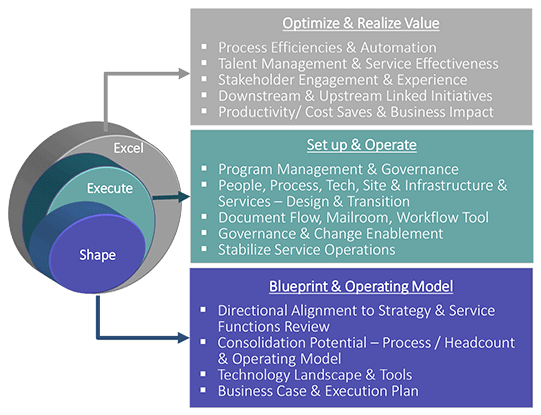We at RvaluE have been working with organizations across various domains to adopt Shared Services as an effective strategy, redesigning the way the processes are carried on downstream and upstream, and transform the end to end processes & staff/ corporate functions to enable the Business.
With over 2 decades of global and India Business Service experience, we bring in the required hands-on expertise for you to Realize Business Value. We have evolved a proprietary approach to adopt ‘SEE’ Framework – Shape, Execute, Excel - with ‘Transformation Centricity right from the strategy creation’.
The Framework initiates with shaping the strategy to design and transition people, process, and technology, stabilize and excel operations to achieve excellence in processes leading to Operational, Service & Business Excellence.





